Showing 85–96 of 166 results

The book in its attempt to study various aspects of the Vedas presents a detailed study of Indian traditionalists on the Vedic literature from Veda VyÀsa to SÀyaõa and other famous ÀcÀryas. While exploring all important commentaries on the Vedas it brings under spotlight the leading Western scholars and modern Indian thinkers and commentators.
With elaborate notes on legends of the Vedas, the book attempts to study various aspects of the Vedas. It presents a detailed study of Indian traditionalists on the Vedic literature, beginning from Veda Vyasa to Sayana and other acaryas including modern saint-scholars. It also views researches of the Western scholars and historians who have critically studied various aspects of the Vedic corpus. It conducts an in-depth exploration of the commentaries on the Vedas, focusing on noted traditional Vedic commentators like Yaska, Jaimini, Kumarila Bhatta, Sayana and Mahidhara as also the modern Indian commentators including Swami Dayananda, S.D. Satavalekar, Sri Aurobindo, Devi Chand, Sriram Sharma and the Western commentators like H.H. Wilson, F. Max Müller, R. Roth, A. Weber, W.D. Whitney, A.B. Keith, and R.T.H. Griffith.
The volume deliberates on definition of the Vedas, division of the Vedas and various shakhas of the five Samhitas as well as a list of Samhitas, Brahmanas, Aranyaka and Upanishad that are extant. It delves into details of the Rigvedic Mandalas and the Yajurveda, Samaveda and Atharvaveda with reference to their subject matter, divisions and even their cultural value. It also examines the phenomenon of oral tradition, especially in conveying the Vedas and secret of preserving the Vedas – Vedic chanting. It has numerous illustrations that include maps, charts and pictures.

Matiram’s sonorous poetry embellished by Purkhu’s sensuous imagery, transport us into the rarefied realm of the Rasraj, where romance interwoven with poignancy, bring alive the emotion-laden shringara rasa. Both lyrics and imagery have been seemlessly sculpted into visual poetry.
No celebration of ritikavya can be complete until we have enjoyed the sonorous poetry of Matiram and the sensuous images of Purkhu.
With well sculpted words and lyrical rhythms Matiram takes us into the rarefied world of the nayak and the nayika, their amorous exchanges, the sensuality of loving glances, the charged moments of romantic feelings, the heart throb of belonging, the poignancy of longing and above all the fulfilment of desire.
Line by line and doha after doha, Matiram leads us into the emotionally charged world of shringararasa and for those of us who are chastened by harishringara we go from one level to another till we hear the flute of Krishna.
And when we find that these sonorous words of Matiram have been brought alive by none other than Purkhu and his school of painting under the patronage of Sansar Chand of Kangra our joy is doubled and Matiram’s words become visual poetry.
In the hands of Purkhu words become lines, emotions take on a colour and desire becomes palpable through the magic of his kalam.
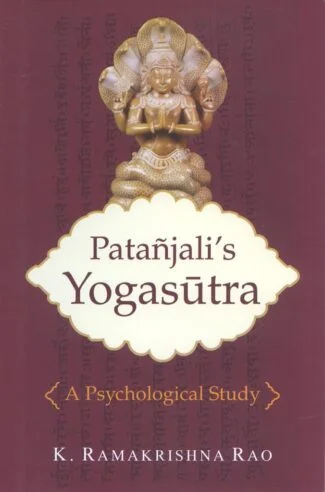
This volume thus provides the psychological context and the relevance of studies of yoga, based on Patanjalis Yogasutra, for advancing the existing psychological knowledge. Yoga psychology provides the foundation for Indian psychology, an emerging discipline rooted in classical Indian tradition, and enables one to experience self-actualization in life.
Patanjalis Yogasutra: A Psychological Study is an attempt at an English translation of Patanjalis Yogasutra with commentary rendered in current psychological idiom. It features an extensive Introduction to the context and attempts to draw out conclusions on the implications of yoga theory and practices to current psychological knowledge.
Yoga paradigm goes well beyond what is currently in vogue and provides a more fruitful model for studying and understanding human nature, both hidden and manifest. This volume thus provides the psychological context and the relevance of studies of yoga for advancing the existing psychological knowledge. Yoga psychology provides the foundation for Indian psychology, an emerging discipline, rooted in classical Indian tradition.
According to Indian psychology, the person is a unique composite of body, mind and consciousness, making a qualitative distinction between mind and consciousness. Self-actualization, the ultimate aim of a person, is realized by cultivating consciousness as-such, resulting in a kind of psycho-spiritual symbiosis, enabling a person to experience an all-around transformation.
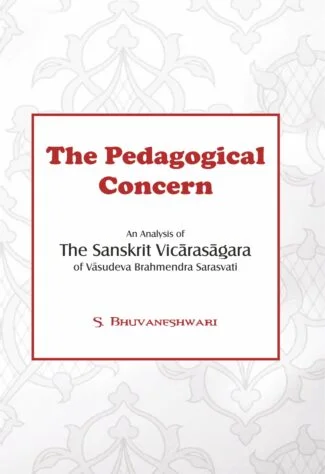
A unique pedagogical method of teaching of Advaita is presented in the Sanskrit trans-creation of Nishcaladasas Vicharasagara and its tippani by Pitambar, by Vasudeva Brahmendra Sarasvati, depending on the need of different types of seekers uttama, madhyama and kanishtha adhikaris simplifying the teaching and learning of Advaita even for laymen.
This book is a critical study of the Sanskrit trans-creation of Vicharasagara by Vasudeva Brahmendra Sarasvati of Nishcaladasa in one of the dialects of Hindi and its tippani by Pitambar, again in the same dialect, imparting a unique teaching technique of Advaita to different types of aspirants. The book thus unfolds the teaching of Advaita depending on the need of different types of seekers uttama, madhyama and kanishtha adhikaris. The volume focuses on two layers of concerns: first, of the appropriate modifications made by the trans-creator using simple Sanskrit and second, in the dialogue between the guru and the different adhikaris.
This critical study introduces us to: (i) the life and works of Nishcaladasa, Pitambar and Vasudeva Brahmendra; (ii) emergence of adhikari-based pedagogy system; and (iii) the employment of pedagogical tools by the guru, depending upon the character and needs of the seeker. The related questions and discussions found in different tarangas of Vicarasagara are pooled in and presented in a cohesive manner to arrive at the core of Nishcaladasas work. It also delves deep into topics such as meditation and its efficacy as a means to gradual liberation, and the nature of liberation.
The book, therefore, introduces the well-defined concepts of Vedanta in a simple pedagogical way as a dialogue between the preceptor and the student, helping even a layman to understand the nuances of Advaita, otherwise a hard subject to digest and grasp.
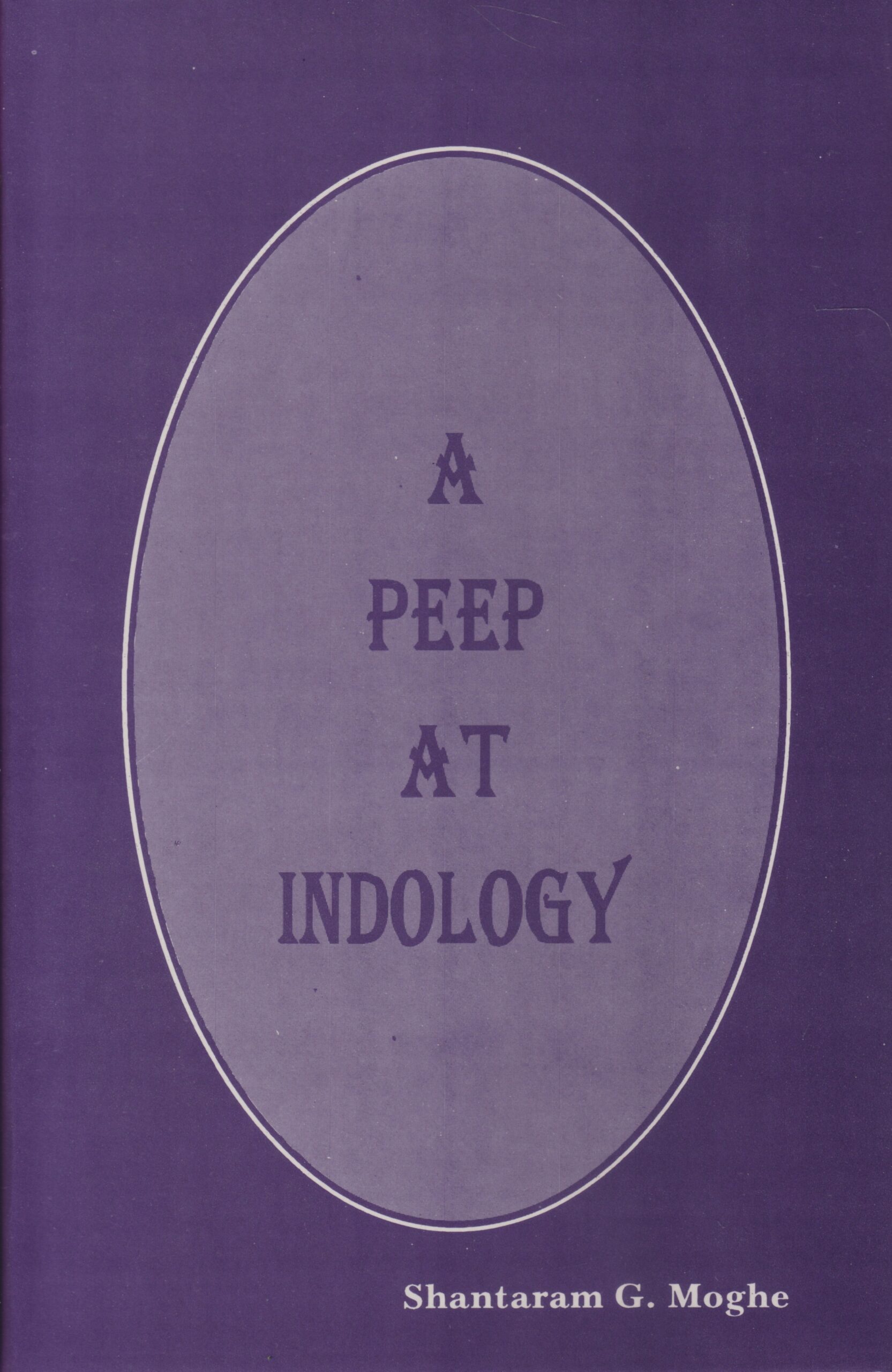
The author takes a1 critical look at some of the hitherto-unnoticed niceties of Banabhattas Harsacaritam, the Raghuvamsam, Abhijnana-Sakuntalam and other classical Sanskrit plays, against the backdrop of Hemadri and Ranganathas commentaries.
How far has the poetic style of the Vedas influenced the later Sanskrit literature, specially the authors of Brahmanas, Upanishads, and even lexicons? How far do the Dharmashastras, particularly in terms of their value concepts, manifest borrowings from the Ramayana and the Mahabharata? Or, again, how do Dharmashastras view the juridical concepts, like nyasa (deposit) and witness? How, and what for, have Valmiki, Kalidasa, and other classical poets/playwrights used astronomical symbology like, for instance, the phenomenon of Moon-Rohini association, in their writings? How is Professor H.D. Velankars contribution to Vedic Indology, specially Rg-Vedic interpretations, unique in its own right? An eminent Sanskritist, Dr. Moghe addresses these and other Indology-related questions, drawing on his highly specialized studies of Dharmashastras, Purva-Mimamsa philosophy, the Ramayana, the Mahabharata, literary classics and dramaturgic texts. In this composition of 12 writings, of varying lengths, the author discovers fresh linkages between Dharmashastras and Indias foremost epics, highlighting how both the Mahabharata and the Ramayanas ethical/social/legal values found almost universal acceptance with the writers of Dharmasastras, either in their unaltered form or with certain modifications. Among other thematic specificities, A Peep at Indology takes a critical look at some of the hitherto-unnoticed niceties of Banbhattas Harshacaritam, Kalidasas Raghuvamsham and Abhijnana Shakuntalam, and other classical Sanskrit plays against the backdrop of Hemadri and Ranganathas well-known commentaries. Invaluable to the scholars/researchers of Vedic Indology, Dharmashastra literature, and classical Sanskrit.

Professor Davane offers stimulating perspectives on varied themes covering classical Sanskrit literature, poetics, linguistics, history, mythology and legendary narratives including reinterpretations of the Vedic view of the moon, samudra, dreams, etc.
A distinguished scholar who has had a lifetime engagement with Sanskrit studies: ranging from the Vedic samhitas to contemporary literary criticism, Professor Davane here offers at once insightful, highly stimulating perspectives on diversely varied themes from classical Sanskrit literature, poetics, linguistics, dramaturgy, history, mythology and legendary narratives. And, these apart, brilliant reinterpretations of the Vedic views of the moon, samudra (ocean), dreams and deep sleep. Reviewing the gamut of kavya definitions and its scope, in terms of the literary genres it encompasses, the book critically examines, for the first time, Rajashekharas view of shabdaharana (verbal borrowings), kavisamayas (conventional poetic ideas) in Sahityashastra, and the progression of rasanishpatti in classical Sanskrit literature. It also seeks to gauge Mahamahopadhyaya Dr. P.V. Kanes contribution to Sanskrit poetics rather than his oft-appraised work on Dharmashastra. Dr. Davane marshals an astonishing mass of original literary sources to highlight the all-expansive influence of Kalidasas unparalleled Iyric: Meghaduta, on classical writings, the richness of Banabhattas utprekshas (poetic imagination), the emergence of Sarasvati as a pantheonic deity, and how Sita, the epitome of ideal womanhood, has been varyingly portrayed by over twenty Sanskrit playwrights. Also shown, in addition, are the legends/myths about Samudra-manthana, Amritamanthan, Rahu-Ketu, Udayana, and Dhanvantari, in their altogether fresh perspectives. This composition of Prof. Davanes writings is an essential reading for the scholars/researchers of Vedic and Classical Sanskrit literature.
Several years after I had started my Hindi blog, I realized that I wanted to share my ideas with a wider audience. I wanted to reach my non-Hindi speaking friends both Indian and American. I started my English blog: laxmisponderings.blogspot.com. The first post was published on May 1, 2011 and is about the Hindu View of Creation. It included the way Hindus consider time, tremendously different from the Judeo-Christian view that God created the world around 6000 years ago. In the Hindu view, the creation is ongoing and the present cycle started some 14 billion years ago. I actually wrote my first English poem in the year 2000 to celebrate my wife’s birthday. It is written in the style of Dr. Seuss, a childrens’ writer. Next poem I wrote was to celebrate my retirement in 2009. Once the trend started, it continued and continues to this day. The blog came several years after I started writing poems in English. So the proper title of this collection should be: Poems and Ponderings. This is the title you are holding in your hands. Enjoy!
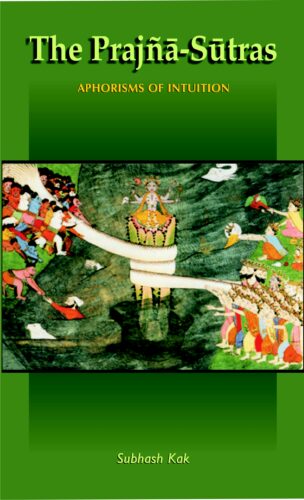
The book presents a bridge between the cosmologies of Vedic knowledge and modern science. Commentaries are provided in 18 sutras on the nature of reality, language, art, mind, transformation and freedom. The sutras deal with abstract ideas, including aesthetics, love, war and suffering.
The Prajna Sutra presents a bridge between the cosmologies of Vedic knowledge and modern science. The ideas are presented as 18 sutras on the nature of reality, language, art, mind, transformation, and freedom on which explanatory commentaries are provided. The sutras tie together common symbols of the Vedic tradition and their deeper intuitions using contemporary vocabulary. The synthesis presented in the sutras is wide-ranging and it not only deals with abstract ideas but also with questions of meaning, aesthetics, love, war, and suffering. Although some consider only linguistic problems to be worthy of study, linguistic expressions ultimately are about things and they cannot properly address the mystery of consciousness. The sutras consider issues that go to the core of philosophy, namely the nature of reality and the relationship of the experiencing subject to it. They speak of the complementary domains of rationality and paradox that underlie ordinary experience. They explain how the mystery of consciousness relates not only to the individual’s cognitive capacity to know but also his ability to transform both himself and his environment.
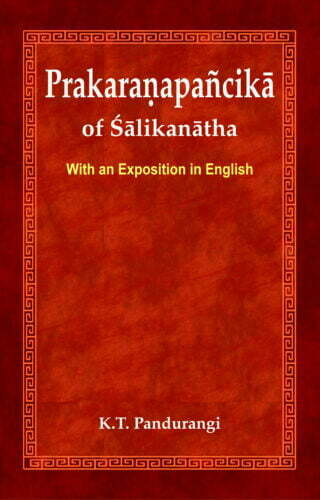
The book of Purva-Mimamsa presents a detailed account of the Prabhakara system and explains the eight main issues in which the other systems of Indian philosophy do not agree with the Prabhakaras. Prabhakara thoughts are here undertaken in the light of modern developments in the areas of epistemology and linguistics.
Prakaranapancika of Salikanatha is an important text of Prabhakara Mimamsa. Salikanatha who is a direct disciple of Prabhakara made distinct contribution to Indian Epistemology and linguistics. The concepts of Svaprkashatva of cognition, Triputikarana formula, Akhyati theory of perceptual error are some of his important contributions in the area of epistemology, whereas anvitabhidhanavada, a theory of sentence meaning, the concept of Karya i.e., Niyoga as the import of injunction, the inclusion of Pauruseya statements under the inference are considered as his important contributions in the field of linguistics.
Nyaya and Bhafta Mimamsa strongly criticize all these concepts, but Vishistadvaita and Dvaita schools are a little friendly in some respects. We are sure that a study of Prakbhakara thought in the light of modern developments in the area of epistemology and linguistics will be fruitful.
भारतवर्षीय दर्शन परम्परा में अनेक सम्प्रदाय, पद्धतियां, चिन्तन–मार्ग और साधना के आयाम हैं। वे सभी पद्धतियाँ मुख्यत: तीन ग्रन्थाें पर आधारित हैं। जिनमें कुमारिल भट्ट का श्लाेकवार्त्तिक, धर्मकीर्ति का प्रमाणवार्त्तिक, तथा गङ्गेश उपाध्याय का तत्त्वचिन्तामणि हैं। वे तीन ग्रन्थ आज तक की भारतीय दर्शन परम्परा के प्रतिनिधि ग्रन्थ हैं और तीन मार्गाें के रूप में स्थापित हैं। हम कुछ भी चिन्तन, लेखन या विचार करते हैं ताे वे इन तीनाें में से किसी एक मार्ग में स्वतः ही चले आते हैं।
धर्मकीर्ति का यह प्रमाणवार्त्तिक ग्रन्थ अत्यन्त कठिन हाेने से इस ग्रन्थ का अब तक किसी भी भाषा में पूर्ण रूप से अनुवाद नहीं हाे पाया है। इसके कुछ श्लाेक अंग्रेज़ी में अनुदित हैं ताे कुछ हिन्दीए फ्रेंचए जर्मन और नेपाली में भी अनुदित हुए हैं। किन्तु अब तक पूर्ण ग्रन्थ का और इसकी किसी भी टीका का पूर्ण अनुवाद न हाेना इसकी भाषा का कठिन हाेना, विचाराें का गूढ़ हाेना तथा अत्यन्त दुरुह प्रकरणाें का हाेना ही कारण रहा है। कुछ विदेशी विद्वान् इसका अंग्रेज़ी में अनुवाद करने के लिए भी लगे हुए हैं किन्तु बीसाें वर्षाें के बाद भी वे इसे पूरा नहीं कर सके हैं। अतः यह हिन्दी अनुवाद अपने आप में प्रथम पूर्ण अनुवाद और सम्पादन है।
प्रस्तुत ग्रन्थ में पाँच प्रकरण हैं – 1. प्रमाण सिद्धि परिच्छेद, मनाेरथनन्दी के साथय; 2. प्रत्यक्ष परिच्छेद, मनाेरथनन्दी के साथ; 3. स्वार्थानुमान परिच्छेद, स्वाेपज्ञवृत्ति सहित (जाे कि धर्मकीर्ति की अपनी ही वृत्ति है); 4. स्वार्थानुमान परिच्छेद, मनाेरथनन्दी के साथ; और 5. परार्थानुमान परिच्छेद, मनाेरथनन्दी के साथ।
इस ग्रन्थ में प्रथम बार समग्र प्रमाणवार्त्तिक का उपस्थापन किया गया है। इस में स्वयं धर्मकीर्ति की स्वाेपज्ञवृत्ति स्वार्थानुमान परिच्छेद में वर्णित है जिसका अनुवाद सहित उपस्थापन पाँचवें परिच्छेद के रूप में रखा गया है।
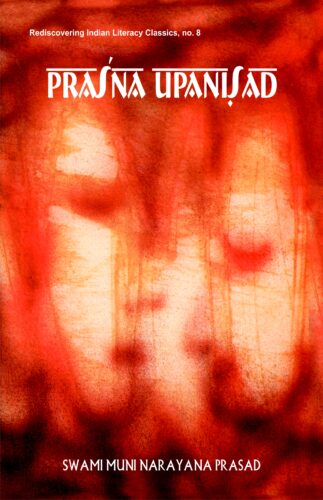
This commentary unravels the riddle-like statements and contexts of the Prasna Upanisad in the light of the meta-logic of Yogic buddhi to study deeply the Brahmavidya philosophy and thus the problem of origin of beings.
In Upanishads is articulated not only the quintessence of spiritual wisdom, but also the remarkable philosophical genius of the classical Hindu mind. Owing, however, to their complexity, metaphor, and even obscurity, Upanishadic writings have been endlessly debated, discussed and written upon, more specially since Shankaras time. Swami Narayana Prasads commentary is yet another valuable addition to the existing literature attempting, as it does, to rationally unlock the metaphysical subtleties of Prashna Upanishad with the master-key handed down to him in the disciplic succession of Sri Narayana Guru. Prashna Upanishad offers an enlightened exposition of brahmavidya: knowledge of the Absolute/Supreme Reality. In an aptly thought-out dialectical situation, it offers a threadbare discussion of six questions which, centreing around procreation/origin of beings, prana: the most vital life-sustaining principle, functional states of the Self (purusha), significance of meditating on AUM lead to the finality of Vedantic wisdom: the sublimity of non-dual Reality: the param purusha of sixteen kalas.

Prof. K.K. Handiqui’s English translation of Setubandha, with detailed introduction and notes, is a monumental work in Prakrit Mahakavyas. It is an onerous task with amazing accuracy and analytical acumen. This critical translation recovers and clarifies the original meanings, Pravarasena’s intentions and implications of poetic expression in Setubandha.
Literary traditions of Sanskrit and Prakrit were highly synchronized for the last two millennia, giving a fillip to arts, cultures and literary creativity. Pravarasena’s Setubandha (or Ravanavaho), a fifth-century composition and the first Mahakavya in Prakrit, is an excellent example of this synchronization, and it has exercised unmistakable influence on Bharavi and Magha.
This volume, Prof. K.K. Handiqui’s English translation of Setubandha with detailed introduction and notes, is a monumental work of the past century in Prakrit Mahakavyas. The author has undertaken this onerous task with amazing accuracy and analytical acumen. In this critical translation, Prof. Handiqui recovers and clarifies the original meanings, Pravarasena’s intentions and implications of poetic expression in Setubandha. While doing so, he has consulted vast mass of Sanskrit commentaries, without compromising his own authority. Therefore it brings to one’s attention Pravarasena’s meticulous style and his use of Prakrit language. This is the first comprehensive edition of Setubandha that includes the original text in Prakrit with its chaya in Sanskrit, a complete translation in English with exhaustive notes.
This scholarly title should invoke keen interest among the academia of Sanskrit and Prakrit, students and researchers, as it represents a significant phase in the development of Kavya poetry, after Kalidasa.
| There are no products |